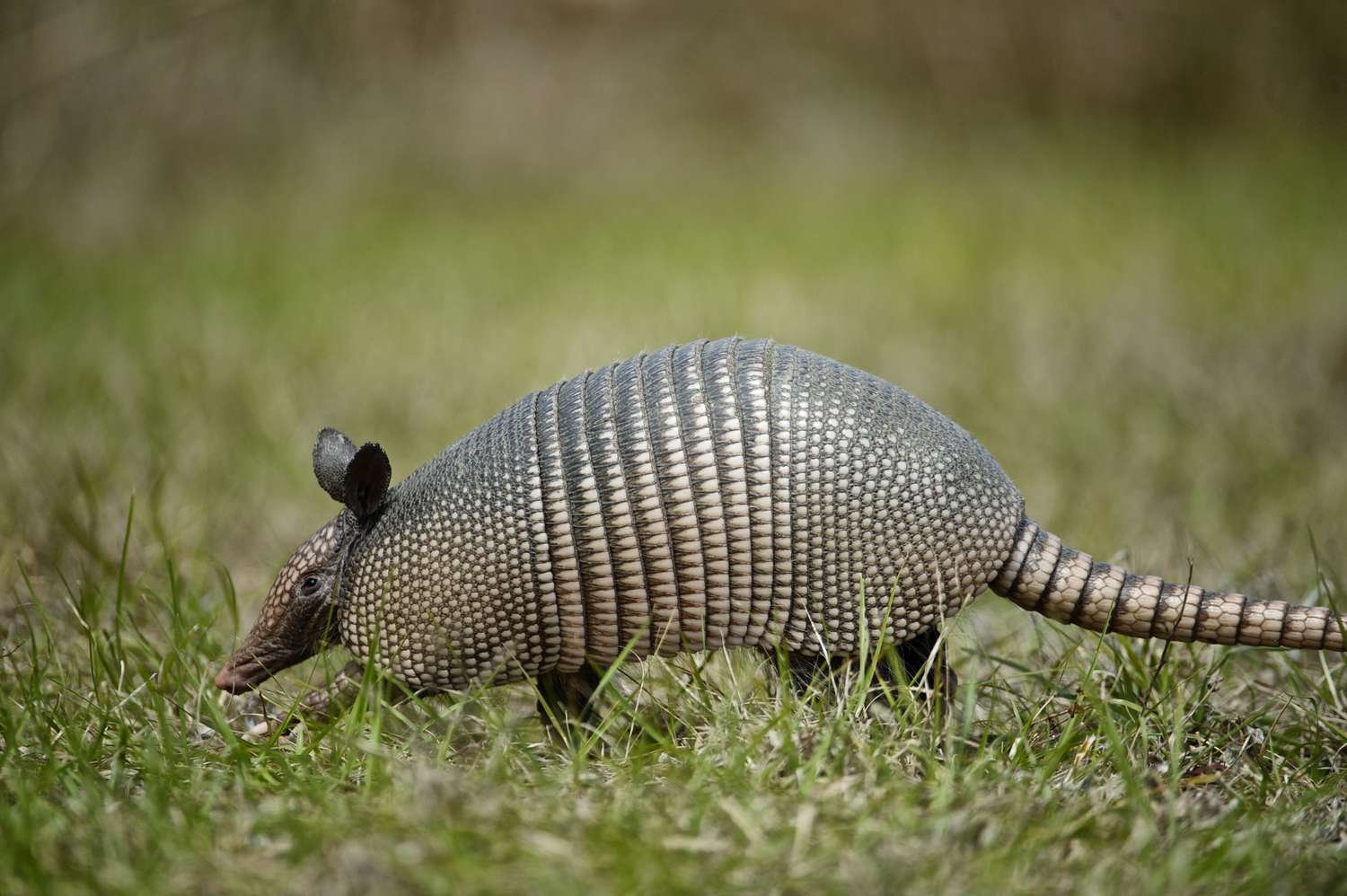:max_bytes(150000):strip_icc():format(jpeg)/GettyImages-121796634-1ba28a12e7164ece8059ead8b0218db2.jpg)
With its scaly armor, pointy ears, elongated snout, and curved claws, the armadillo is undeniably odd-looking. Belonging to the same group of mammals as sloths and anteaters, armadillos are voracious insectivores that eat large numbers of beetles, grubs, ants, termites, and other insects, grabbing them with their sticky tongues. Occasionally, they also eat small amphibians, reptiles, and their eggs.
- Wesley Anderson, PhD, is an assistant professor at Auburn University and wildlife extension specialist at the Alabama Coop Extension System.
- Robert Pierce, PhD, is an associate professor and state extension fisheries and wildlife specialist at the University of Missouri.
- Jacob Dykes, PhD, is an assistant professor and extension wildlife specialist at Texas A &M University.
When they’re foraging for dinner, armadillos can cause significant damage to lawns, gardens, and flower beds. “They have poor eyesight but a powerful sense of smell that they rely on to find food,” says Wesley Anderson, PhD, assistant professor at Auburn University and wildlife extension specialist at the Alabama Coop Extension System. “Their burrows also can be a problem if they’re undermining a house or shed foundation.”
Armadillos are found throughout the Southeast but actually have expanded their range in recent years. “We see them moving into areas such as southern Illinois,” says Robert Pierce, PhD, associate professor and state extension fisheries and wildlife specialist at the University of Missouri. “But they don’t tolerate freezing temperatures, and their food supply is scarce in winter so they have not yet moved any farther north.”
Interestingly, a new study has revealed that the nine-banded armadillo, which is what armadillos in the U.S. have long been called, is actually a different species. “It was thought that the nine-banded armadillo’s range was from the central U.S. to Argentina,” says Jacob Dykes, PhD, assistant professor and extension wildlife specialist at Texas A &M University. “But researchers have discovered that there are actually four distinct species across that range.” The species of armadillo found in the U.S. has a new name: the Mexican long-nosed armadillo.
How To Get Rid Of Armadillos
There are no guarantees, but you can try a few of these tactics to prevent armadillos from digging up your lawn and garden:
- ID the culprit. Skunk damage can look similar to armadillo digging; set up a game cam if you’re not sure what’s doing the damage, says Anderson.
- Block entry under decks, sheds and houses. Attaching hardware cloth is usually enough to deter armadillos from digging around under foundations, says Dykes.
- Use a fence to keep them out of specific areas. They can climb, but they’re not as good as other garden visitors, such as groundhogs, says Anderson. Install a fence that’s slanted outward and about 3 feet tall with a short section buried underground. A single strand of electrified wire fencing (it’s enough to discourage them but not hurt them) is another good option.
- Consider a raised bed garden. Armadillos may be less inclined to dig in beds if they have to climb up to get into them, says Dykes.
- Get rid of brush piles, which may discourage them from hanging around to forage, says Pierce.
- Consider using grub control products on your lawn. This may reduce the amount of foraging, though it’s not foolproof, says Dykes. Check with your local university coop extension service (find yours here) to learn the right time to apply grub control your area.
- Forget about using repellants, soap, or sonic devices to keep armadillos away. There’s no science showing these are effective deterrents, says Pierce.
- For pesky armadillos, you may need to hire a nuisance wildlife specialist for removal, says Anderson.
Understanding Armadillos
Regardless of what they’re called, most people know exactly what an armadillo looks like, with its roly-poly armored form and weird shuffling walk. They’re about the size of a cat, weighing about 8 to 15 pounds and about 15 to 17 inches long, plus tail, says Dykes.
While foraging for food, armadillos seem oblivious to anything else, allowing you to get very close before they become alarmed. They can run well when necessary and are good swimmers. “But, when startled, they jump into the air, which reduces their chances of surviving an encounter with a vehicle,” says Pierce.
Armadillo burrows are typically found in forested areas and may be 8 to 10 feet deep and 15 feet long, with several burrows available for escape purposes. Damage in your yard or garden are usually dozens of shallow holes a few inches deep, says Dykes. You also may see three-toed tracks with claw marks.
Armadillos are nocturnal, though they may move around during the day in cooler temperatures.
A fascinating aside is that they always give birth to four identical babies, all of the same sex, says Anderson.
Do Armadillos Carry Disease?
Armadillos can carry rabies (though rarely) and the bacterium Mycobacterium leprae which causes leprosy, also known as Hansen’s disease. “There are a handful of cases annually of people in the U.S. being affected by Hansen’s disease, but the route of transmission is not well understood,” says Anderson. “One theory is that contaminated soil is responsible for both armadillos and humans contracting the infection.”
Although some research indicates up to 20 percent of armadillos are infected in some areas, most experts believe the risk of contracting Hansen’s disease from armadillos is low. The disease also can be treated effectively with antibiotics.
